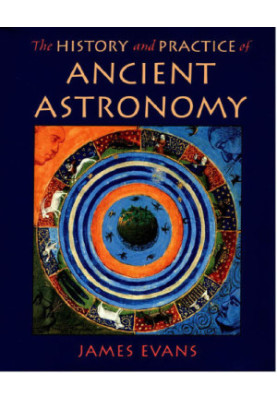The History and Practice of Ancient Astronomy
 Instant download
Instant download
after payment (24/7)
 Wide range of formats
Wide range of formats
(for all gadgets)
 Full book
Full book
(including for Apple and Android)
The History and Practice of Ancient Astronomy combines newscholarship with hands-on science to bring readers into direct contactwith the work of ancient astronomers. While tracing ideas from ancientBabylon to sixteenth-century Europe, the book places its greatestemphasis on the Greek
period, when astronomers developed thegeometric and philosophical ideas that have determined the subsequentcharacter of Western astronomy. The author approaches this historythrough the concrete details of ancient astronomical practice. Carefullyorganized and generously illustrated, the book can
teach readers howto do real astronomy using the methods of ancient astronomers. Forexample, readers will learn to predict the next retrograde motion ofJupiter using either the arithmetical methods of the Babylonians or thegeometric methods of Ptolemy. They will learn how to use an astrolabeand
how to design sundials using Greek and Roman techniques. The bookalso contains supplementary exercises and patterns for making someworking astronomical instruments, including an astrolabe and anequatorium. More than a presentation of astronomical methods, the bookprovides a critical look at the
evidence used to reconstruct ancientastronomy. It includes extensive excerpts from ancient texts, meticulousdocumentation, and lively discussions of the role of astronomy in thevarious cultures. Accessible to a wide audience, this book will appealto anyone interested in how our understanding of
our place in the universe has changed and developed, from ancient times through the Renaissance.
period, when astronomers developed thegeometric and philosophical ideas that have determined the subsequentcharacter of Western astronomy. The author approaches this historythrough the concrete details of ancient astronomical practice. Carefullyorganized and generously illustrated, the book can
teach readers howto do real astronomy using the methods of ancient astronomers. Forexample, readers will learn to predict the next retrograde motion ofJupiter using either the arithmetical methods of the Babylonians or thegeometric methods of Ptolemy. They will learn how to use an astrolabeand
how to design sundials using Greek and Roman techniques. The bookalso contains supplementary exercises and patterns for making someworking astronomical instruments, including an astrolabe and anequatorium. More than a presentation of astronomical methods, the bookprovides a critical look at the
evidence used to reconstruct ancientastronomy. It includes extensive excerpts from ancient texts, meticulousdocumentation, and lively discussions of the role of astronomy in thevarious cultures. Accessible to a wide audience, this book will appealto anyone interested in how our understanding of
our place in the universe has changed and developed, from ancient times through the Renaissance.
LF/137413/R
Data sheet
- Name of the Author
- James Evans
- Language
- English
- ISBN
- 9780195095395
- Release date
- 1998

















